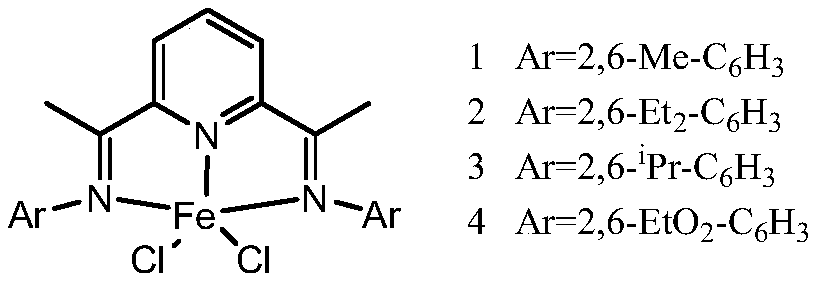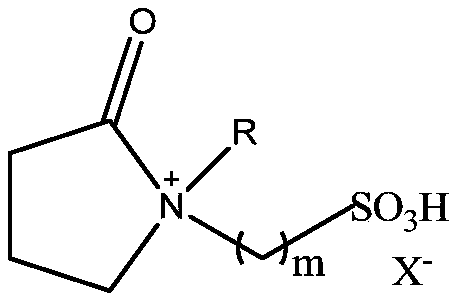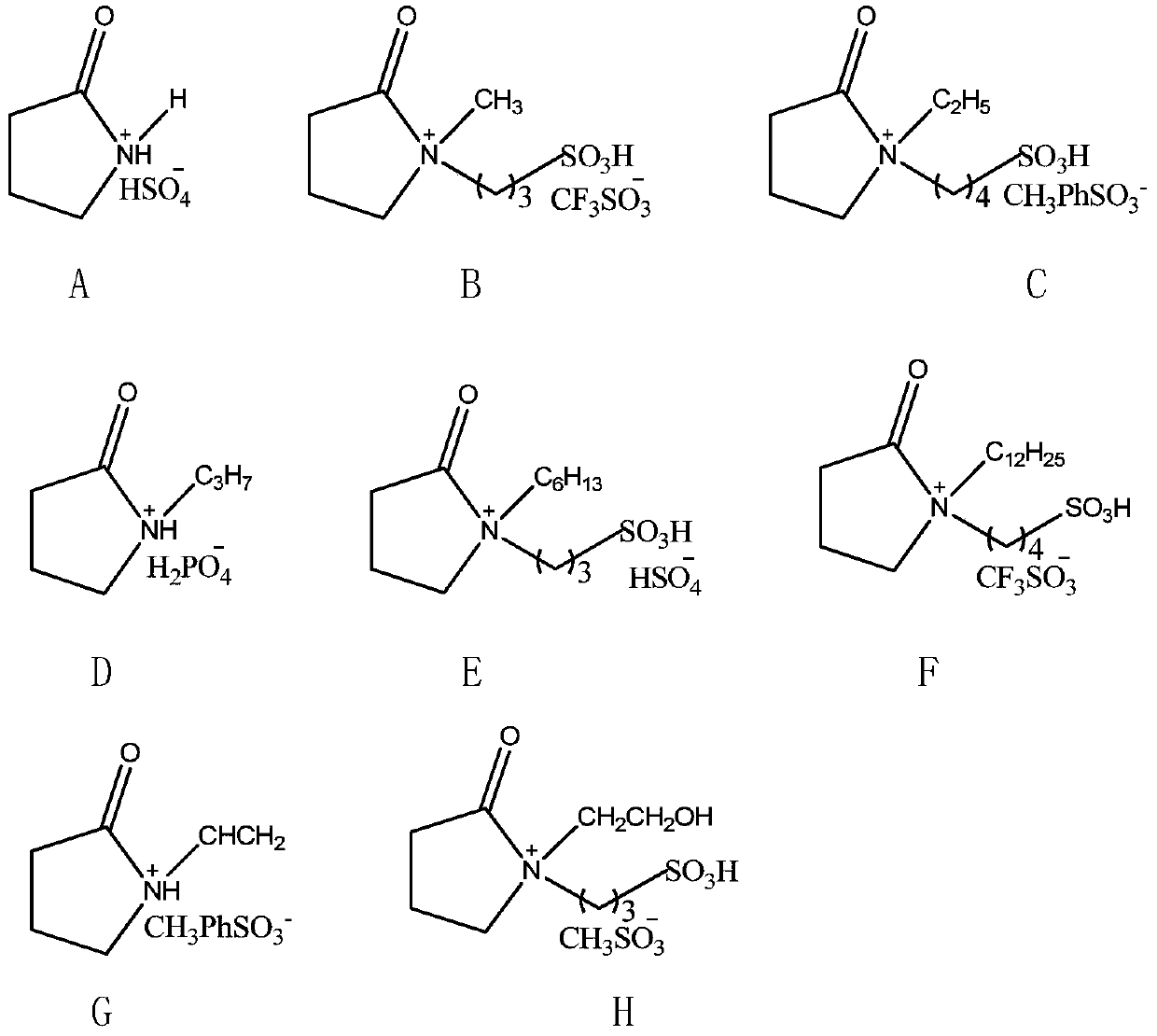A kind of preparation method and application of iron-based pyrrolidone ionic liquid catalyst
A technology of iron-based pyrrolidone and ionic liquid, which is applied in the field of catalysis, can solve the problems of high catalyst cost and non-recyclable catalyst, and achieve the effects of good product distribution, low toxicity and high conversion rate
- Summary
- Abstract
- Description
- Claims
- Application Information
AI Technical Summary
Problems solved by technology
Method used
Image
Examples
Embodiment 1
[0026] Pyridine diimide iron compound 1 (0.2mmol), pyrrolidone ionic liquid A (3mmol), was added to a 500ml three-necked flask equipped with a magnetic stirring heating device and a condensation device, and under nitrogen protection, the temperature was slowly raised to 60°C. Keeping warm and stirring for 3 hours, cooling down to room temperature, and drying in a vacuum oven to obtain an iron compound / ionic liquid catalyst. Then add 1-hexene (0.6mol) and trimethoxyhydrogensilane (0.8mol) dropwise to the liquid catalyst system through the dropping funnel, keep the reaction temperature at 65°C, turn on the condensing reflux, continue to stir the reaction for 6h, and stop the reaction , standing and cooling to below room temperature, the ionic liquid is solidified, and the product and the ionic liquid are separated. Corresponding fractions were collected by distillation under reduced pressure. The conversion rate of 1-hexene was determined by GC-MS to be 96.9%, and the yield of β...
Embodiment 2
[0028] Add pyridinediimide iron compound 1 (0.2mmol) and pyrrolidone ionic liquid B (4mmol) to a 500ml three-neck flask equipped with a magnetic stirring heating device and a condensation device, and slowly raise the temperature to 120°C under the protection of helium , keep stirring for 3 hours, cool down to room temperature, and dry in a vacuum oven to obtain an iron compound / ionic liquid catalyst. Then add 1-heptene (0.6mol) and trimethoxyhydrogensilane (0.7mol) dropwise to the liquid catalyst system through the dropping funnel, keep the reaction temperature at 90°C, turn on the condensing reflux, continue to stir the reaction for 6h, and stop the reaction , standing and cooling to below room temperature, the ionic liquid is solidified, and the product and the ionic liquid are separated. Corresponding fractions were collected by distillation under reduced pressure. The conversion rate of 1-heptene was determined by GC-MS to be 96.9%, and the yield of β-addition product (hep...
Embodiment 3
[0030] Pyridine diimide iron compound 2 (2mmol), pyrrolidone ionic liquid C (10mmol), was added to a 500 ml three-necked flask equipped with a magnetic stirring heating device and a condensation device, and under the protection of nitrogen, the temperature was slowly raised to 90 ° C, and the temperature was kept Stirring was continued for 3 hours, the temperature was lowered to room temperature, and dried in a vacuum oven to obtain an iron compound / ionic liquid catalyst. Then add 1-undecene (0.3mol) and triethoxyhydrogensilane (0.5mol) dropwise to the liquid catalyst system through the dropping funnel, keep the reaction temperature at 120°C, turn on the condensing reflux, and continue to stir for 6h. Stop the reaction, let it cool down to below room temperature and the ionic liquid solidifies, and separate the product and the ionic liquid. Corresponding fractions were collected by distillation under reduced pressure. The conversion rate of 1-undecene was determined by GC-MS t...
PUM
 Login to View More
Login to View More Abstract
Description
Claims
Application Information
 Login to View More
Login to View More - R&D
- Intellectual Property
- Life Sciences
- Materials
- Tech Scout
- Unparalleled Data Quality
- Higher Quality Content
- 60% Fewer Hallucinations
Browse by: Latest US Patents, China's latest patents, Technical Efficacy Thesaurus, Application Domain, Technology Topic, Popular Technical Reports.
© 2025 PatSnap. All rights reserved.Legal|Privacy policy|Modern Slavery Act Transparency Statement|Sitemap|About US| Contact US: help@patsnap.com



